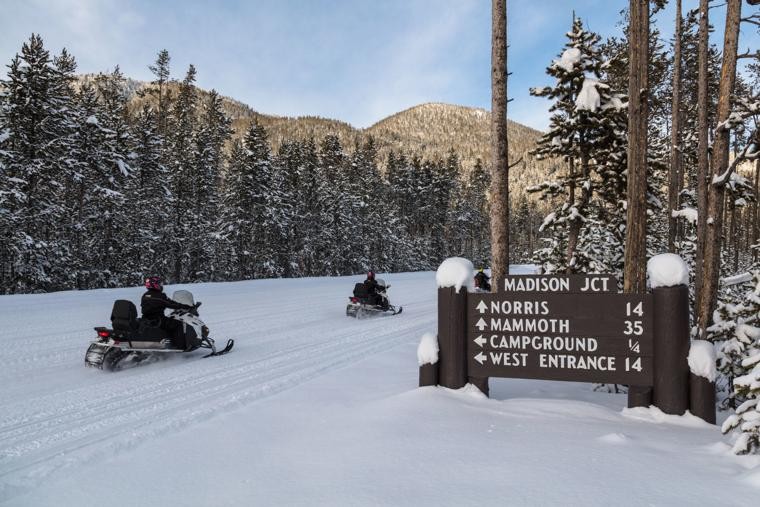The National Park Service will tap visitor fees to pay for basic visitor services at some parks as the government shutdown extends into its third week.
P. Daniel Smith, acting director of the National Park Service, said in a statement Sunday that parks can now access visitor fees in order to “provide immediate assistance and services to highly visited parks during the lapse in appropriations.” The available funds would include entrance, camping and parking fees collected from visitors that are usually reserved for other projects.
“We are taking this extraordinary step to ensure that parks are protected and that visitors can continue to access parks with limited basic services,” Smith said.
The statement said the agency would begin using the funds in the coming days to clean up trash, maintain restrooms and bring on additional law enforcement rangers at parks across the country. Top officials at individual parks will submit cost estimates to the director’s office for review before they can bring more employees on, according to a memo outlining the agency’s shutdown plan, first obtained by the Washington Post.
It’s unclear what that will mean for Yellowstone National Park. Jody Lyle, a Yellowstone spokeswoman, said in an email that officials are “reviewing the updated contingency plan and are determining the appropriate next steps for Yellowstone.”
Many national parks have remained at least partially open during the shutdown, and people across the country have raised concerns about overflowing trashcans, dirty bathrooms and people damaging fragile areas. In Yellowstone, the road from Mammoth Hot Springs to Cooke City is open to cars and private companies running snowmobile and snowcoach tours into the park’s interior — though nobody’s around to collect entrance fees. Volunteers and tour guides have taken it upon themselves to clean some places and ensure outhouses have toilet paper.
Fees are collected at 115 of the park service’s 418 parks. About 80 percent of the fees collected stay within a park, while the other 20 percent is directed to parks that don’t collect fees. In fiscal year 2017, about a quarter of Yellowstone’s budget — $17.1 million — consisted of park fees.
Federal law says the money should be used for maintenance, habitat restoration, enhancing visitor experience and a few other items separate from the park’s day-to-day operations. Many critics of the agency’s Sunday announcement worry that diverting that money will rob those other projects of money and harm the agency’s financial stability.
“If they use that money to deal with normal operations, then that money is no longer available to address let’s say the (maintenance) backlog,” said Emily Douce, director of budget and appropriations for the National Parks Conservation Association. “ ... We don’t know what the implications will be.”
But some praise the plan, saying it would provide for important services while the shutdown rolls on. U.S. Sen. Steve Daines, R-Montana, sent a letter to Interior Secretary David Berhardt on Saturday urging him to find a way to provide some services, such as trash collection or bathroom maintenance. On Sunday, Daines released a statement praising the department’s announcement about the fee money shuffling, saying he was glad the Interior department “will fund these critical programs while the government is shut down, supporting Montana’s gateway communities and protecting our national parks.”
The idea is also backed by the Property and Environment Research Center, a Bozeman think tank that prides itself on practicing “free-market environmentalism.” Shawn Regan, a fellow at PERC, said in an email that using those funds is “eminently sensible.”
“With the government shutdown entering its third week, the National Park Service is right to search for creative ways to get our nation’s most popular parks back up and running,” Regan said.
Using the money to fund some park operations during a shutdown would be a first. Steve Iobst, former deputy superintendent of Yellowstone, spent more than 40 years with the park service, retiring in 2016. He said the idea had never come up during the various shutdowns he worked through — he guessed he went through nine.
“It’s baffling to me,” Iobst said.
This shutdown is different because many parks are open, which wasn’t the case during the ones Iobst worked. Still, Iobst said fee money is viewed as separate from the park’s appropriated budget, and that it’s not supposed to pay for routine operations. Instead, it’s often used in multi-year spending plans, earmarked for certain maintenance or research projects. Recently, he said, much of it has been directed at the agency’s $11.6 billion deferred maintenance backlog.
“You’re dipping into a fund that is already pretty much committed for one-year or multi-year programs,” Iobst said.
For now, volunteers and private companies are trying to help out in Yellowstone. Groups of volunteers swept through the northern portion of the park on Saturday and Sunday, picking up trash and cleaning up bathrooms.
Meanwhile, Xanterra and 13 other companies are paying for plowing and grooming. Rick Hoeninghausen, Xanterra’s director of sales and marketing, said that costs about $7,500 a day, about half of which is paid by Xanterra. He wasn’t sure how long they could sustain that.
“Everybody wants the shutdown to end soon,” he said. “This isn’t something we’re hoping to have to do indefinitely.”



